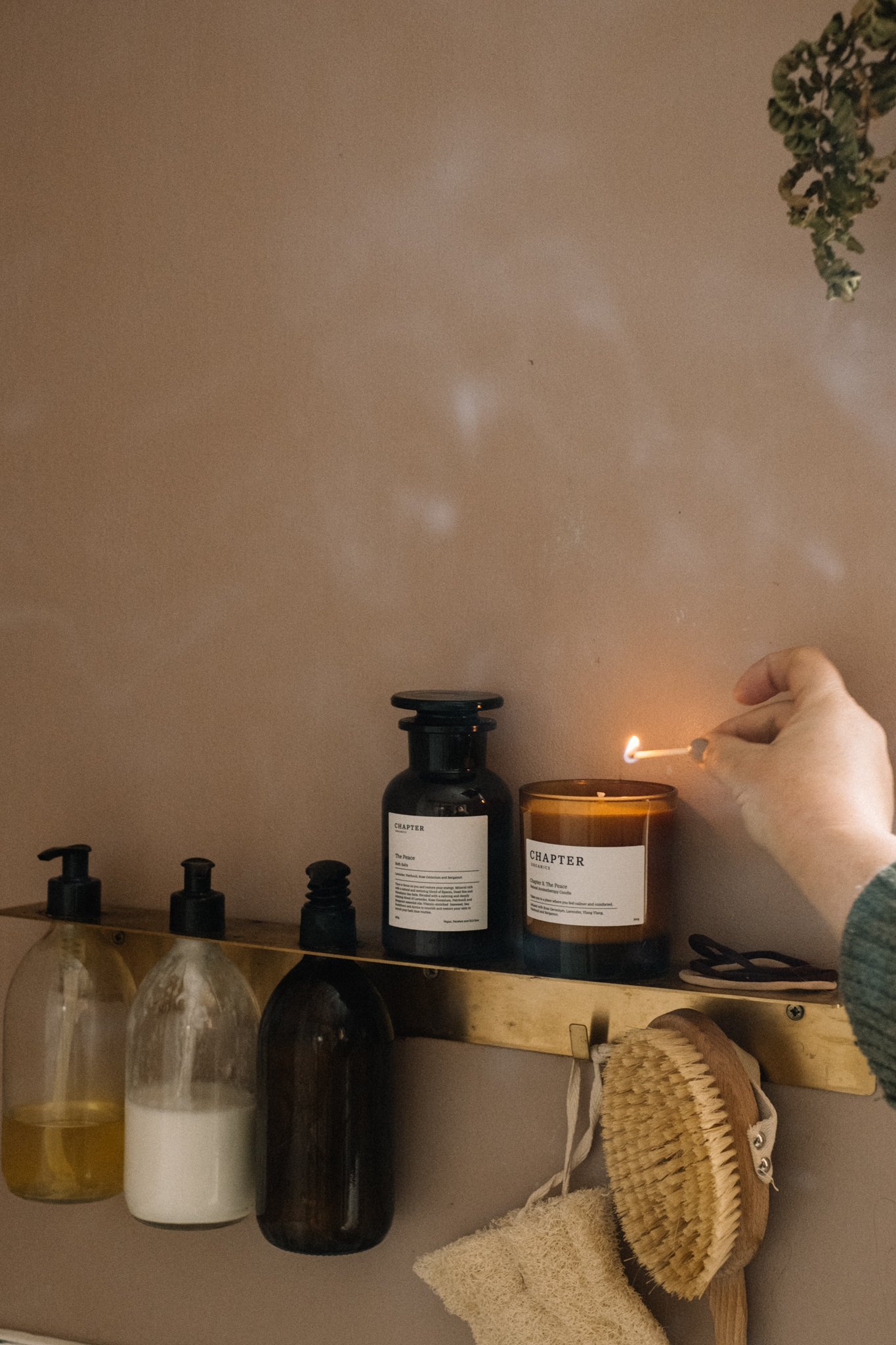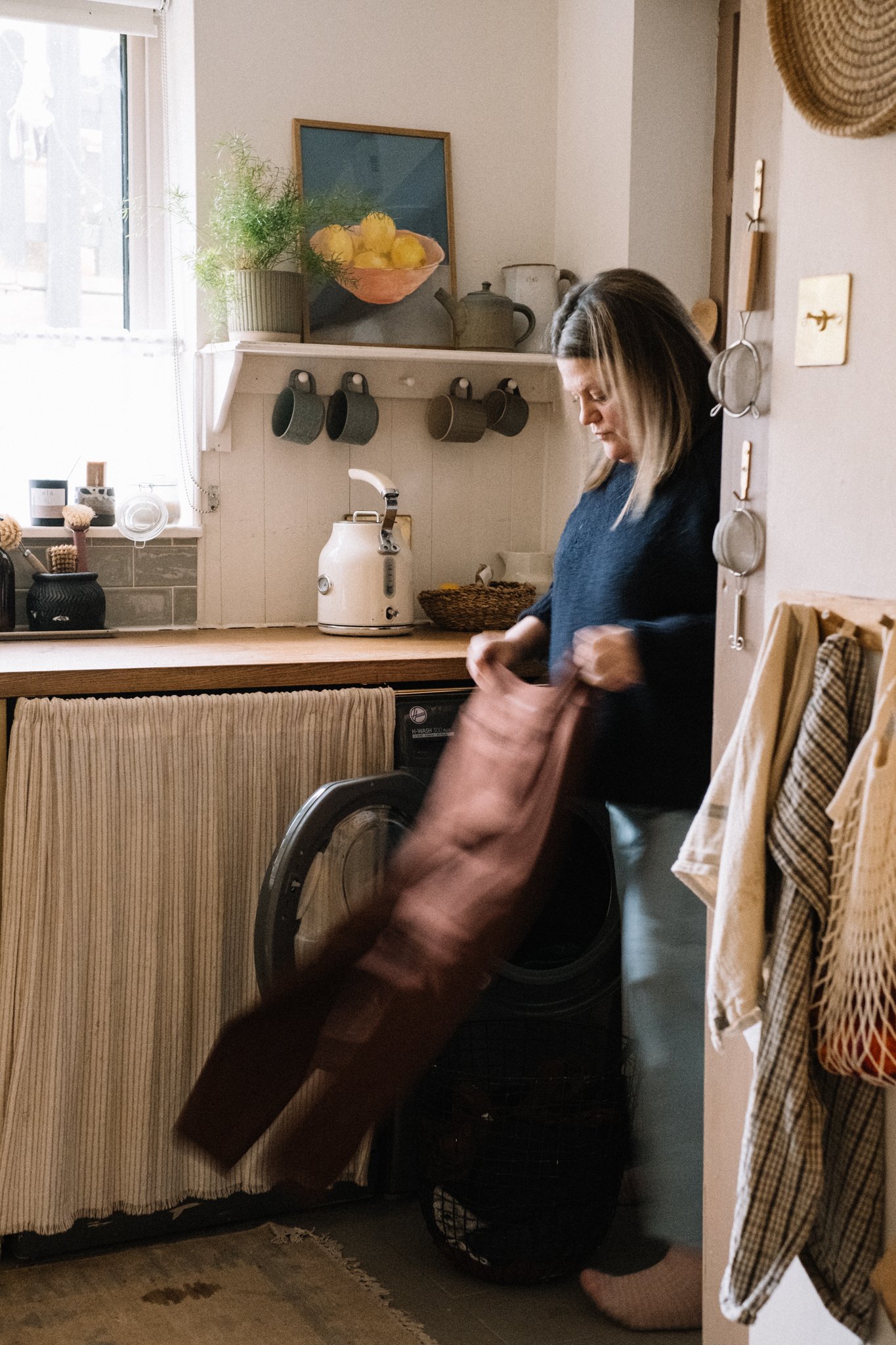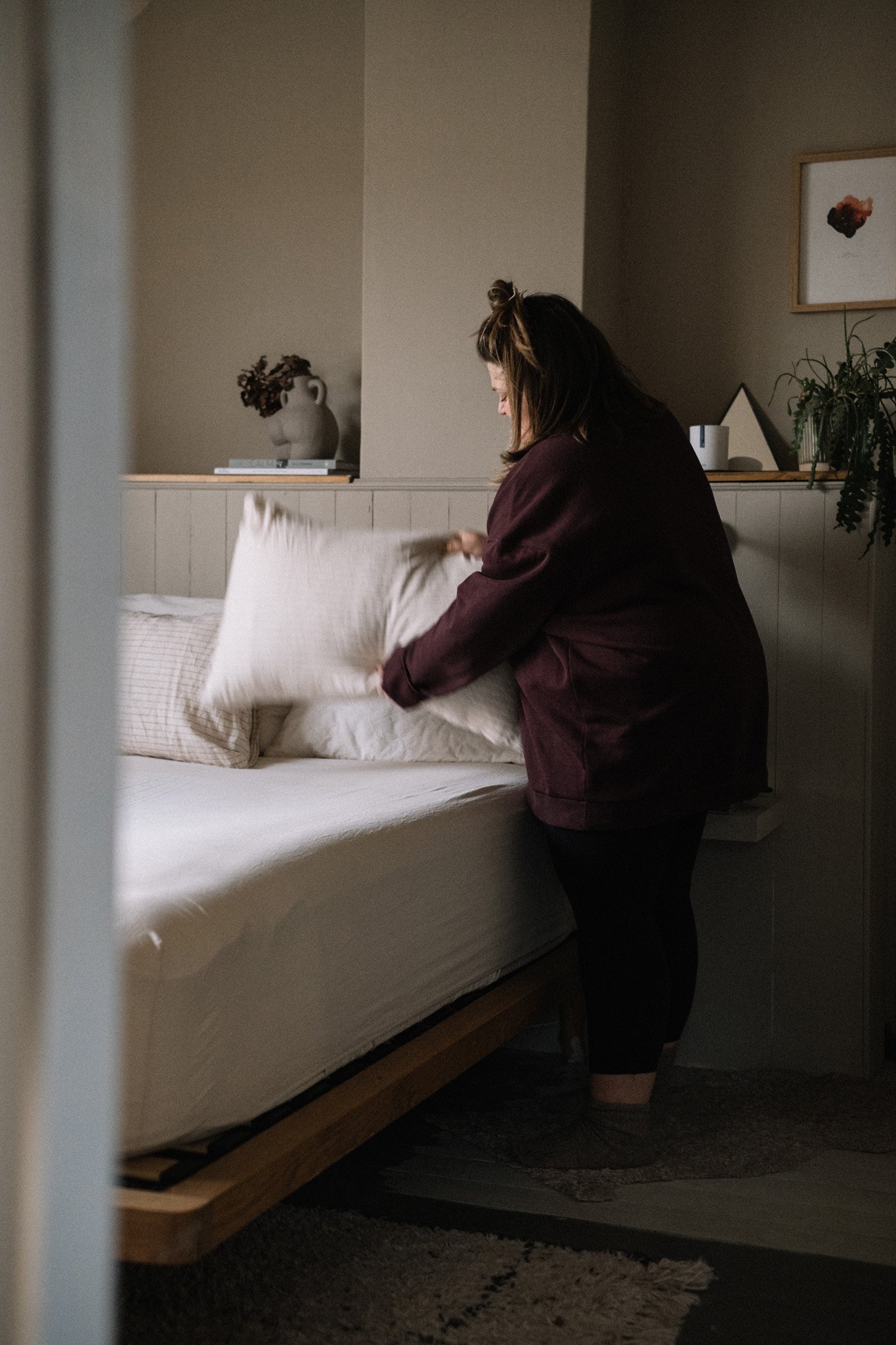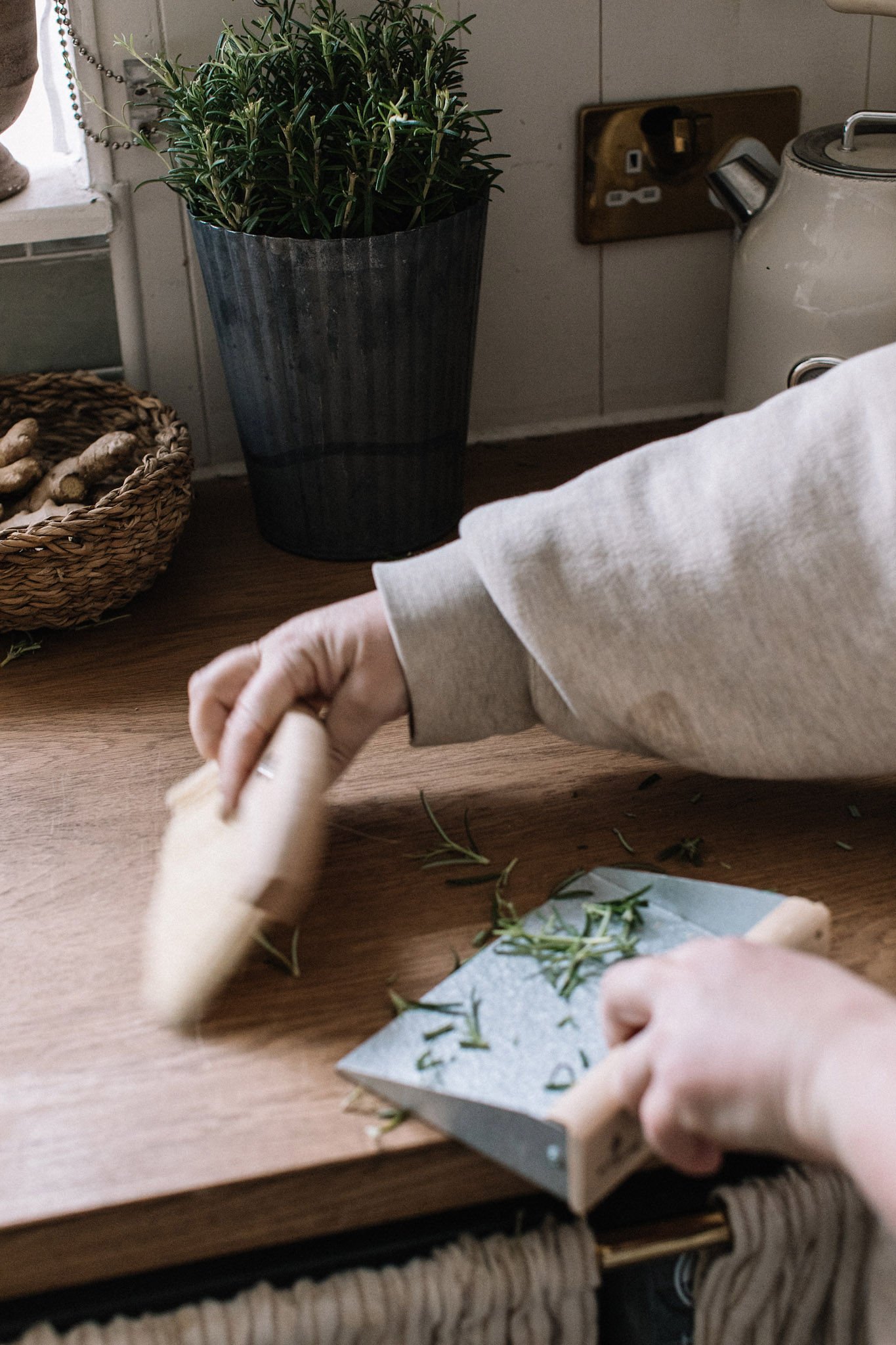Home Life: How to do Kinder Laundry
I’ve always taken the approach of wash when needed, letting laundry build up until the laundry basket gets full. But it’s only recently I’ve started to learn a lot more about the care of clothing - for the longevity of the fabrics we invest our hard earned money into, for our pocket and for the planet.
Gone are the days where the only options available to use is a box of Daz and a blue bottle full of cough inducing fragrance called ‘Blue Sky’. These toxic detergents are not only a big contributor to allergies in humans but also are harmful to aquatic life and I don’t need to go into single use plastic. Running washing machines and dryers uses a lot of electricity - for those of us that have smart meters and been taking notice of them we know that our washing machine is a big draw of electricity.
Prolong wear
When undressing at the end of the day (read: the minute you get home) hang your clothes on a hanger for a few hours on a doorframe or peg before placing back into the wardrobe later. This allows them to air and any creases to drop out. Denim is designed to last a lot longer between washes but I hate the smell of clothes that need a wash so I use a natural fabric freshener like Attirecare which has natural antibacterial and antimicrobial properties.
Wash at a lower temp and on a shorter cycle
Harvard university found that washing clothes in cold water for an every day load is as effective as hot water. 90% of the energy used in our washing machines is the heating of the water so if we’re able to use cooler washes we’ll be going a long way to using less energy and it is kinder to our clothing too. We also don’t need to use long cycles for regular washes - a shorter wash is fine for most loads. The only wash I do that is longer than an hour is bed clothes and towels.
Choose a refill detergent
There are oodles of choices of planet, animal and people friendly detergents on the market now. It can be hard to make a choice but start with what suits your lifestyle. Do you have little time? Perhaps a mail order subscription like this one from Homethings might be best for you. Or perhaps you have limited space and find the faff of refilling bottles annoying, in which case opt for laundry strips. For me, I do a refill shop at my local zero waste place every month so I fill with Miniml which I love the scent of. For this I use flip top glass bottles from Ikea.
Add a spoonful of vinegar to more soiled washes
Vinegar is a wonder product for so many aspects of cleaning: it can remove mould and mildew, eliminate odours, lift up build ups of detergent, removes stains and softens fabric. It’s important to know it shouldn't be combined with any kind of bleach and shouldn't be used in every wash as it can weaken washing machine seals. It also shouldn't be used in fitness clothing due to the elastane which vinegar can break down.
Avoid the tumble dryer
A tumble dryer is an energy guzzler and also not so kind to fabrics, weakening fibres and reducing the life of your garments. If you can air drying next to a radiator or if you have the privilege of a garden, outside on the line if the weather allows it means you are being kinder to your fabrics ands the planet. I’ve never owned a tumble dryer but when I was doing AirBNB needed to get towels and bedding dry quickly between guests and because the properties in Brighton suffer from damp I had to use the launderette in the winter months when I couldn't use the line. If I was to break down what I spent over a year and compared to what a machine would cost me - to buy and in energy - I think I would still be better off using the launderette every now and then. The house I’m in now has no damp and I find things dry super quick by the radiator in the winter months. Make sure you ventilate your home while drying laundry like this to avoid mould and mildew.
Share to Pinterest.
Useful post?
Sharing is caring, hit the pin it button in the top left as you hover and share to the Pinterest universe!














Stuck for a last minute gift to send an eco min did loved one?Here are some ideas to help you out.